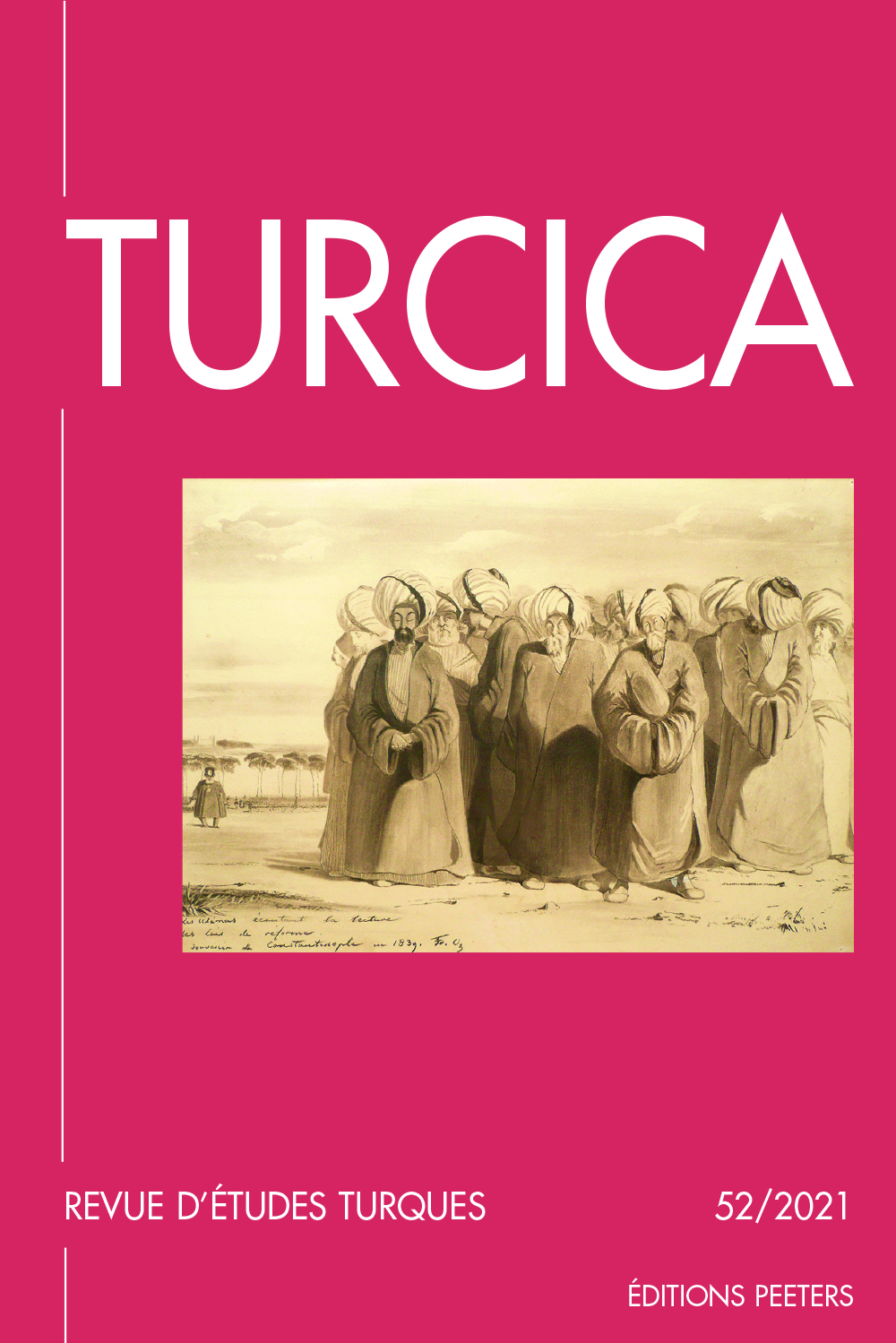 previous article in this issue previous article in this issue | next article in this issue  |

Preview first page |
Document Details : Title: 'I Believe in Stories' Subtitle: The Journey of a Young Boyar from Bucharest to Istanbul in the Early Nineteenth Century Author(s): VINTILĂ-GHIŢULESCU, Constanţa Journal: Turcica Volume: 50 Date: 2019 Pages: 285-317 DOI: 10.2143/TURC.50.0.3286577 Abstract : This article is about the memoirs of Dumitrache Merişescu, a young merchant/boyar born in Colentina (a suburb of Bucharest) of ‘Greek’ parents, who travelled from Bucharest to Constantinople in various guises. The study first explores this young man’s initiation into both amorous and commercial liaisons, and second, the manner in which he reinvents himself in the course of his journey, adopting new clothes and learning new languages. Two important hypotheses emerge from the analysis of these memoirs unpublished and hitherto unknown to historians. The first hypothesis concerns the memoirs themselves, which are constructed in a different way from others in style, language, and behaviour. The memoirs are the first testimony to the language and languages spoken in different social strata, and point to an active presence of ‘Greeks’ in the modelling of an education and a culture. With the help of language, Dumitrache Merişescu constructs a ‘mobile’ identity, maintained by a certain type of behaviour and costume. The second hypothesis takes shape around the clientelary relations that connect this group, dominated by the figure of the merchant Ioan Hagi Moscu. Mobile due to the activities they pursue – as merchants, artisans, nannies – the ‘Greeks’ are bound together by a distinctive sort of solidarity. Travelling through the Ottoman Empire and its periphery (Wallachia and Moldavia), Dumitrache always encounters Greeks, Bulgarians, and Serbs who are ready to help him. Their identity combines three elements: a common confession, a common language, and mobility. L’article explore les mémoires d’un jeune boyard/marchand, né à Colentina (près de Bucarest) de parents «grecs» (ou vlaques), qui voyage à l’intérieur du pays, puis vers Istanbul. L’étude analyse d’abord l’initiation de ce jeune homme à travers ses liaisons amoureuses et ses relations commerciales, puis la manière dont il se révèle à lui-même à travers ses voyages, en revêtant de nouveaux habits et en maîtrisant de nouvelles langues. Deux importantes hypothèses émergent de la lecture de ses mémoires, encore inédits et inconnus des chercheurs. La première hypothèse met en évidence la construction spécifique de ses mémoires par leur style, la langue et le comportement relaté qui les distinguent d’autres mémoires rédigés à la même époque. Ces mémoires sont un témoignage de première main sur la langue et les langages parlés par les différentes couches sociales et donnent à voir une présence active des «Grecs» dans le façonnage d’une éducation, d’une culture. À l’aide de ce langage, Dumitrache Merişescu se fabrique une «identité mobile», complétée par un comportement et un costume spécifiques. La deuxième hypothèse se construit autour de réseaux et relations de clientèle édifiées par un certain groupe et dominées par la personnalité du marchand Ioan Hagi Moscu. Mobiles par leurs activités – marchands, artisans, nourrices – «les Grecs» sont liés par une solidarité particulière. Voyageant à travers l’Empire ottoman et ses périphéries (Valachie et Moldavie), Dumitrache rencontre des Grecs, des Bulgares, des Serbes, des Valaques toujours prêts à l’aider. Leur identité réunit trois éléments communs: la confession, la langue, la mobilité. |
 |


